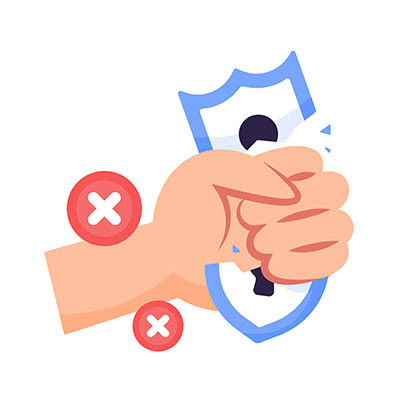Does this sound familiar? Your business is growing, but you haven’t changed your server hardware since you began operations. It’s hindering growth at this point, and you don’t know what to do. The best solution out there is to turn to the cloud. With the right implementation of a cloud-first model, you can effectively future-proof your business so it can grow unhindered.
Itek Systems Blog
How much control do you really have over your IT assets? Oftentimes, businesses will consider other priorities, like sales, operations, and customer service, before they focus on IT systems and resources. The problem with this is that it creates a significant burden for your business, both in terms of the hidden financial drains and serious security vulnerabilities that undermine your business’ stability.
We all have too many accounts nowadays. Between our personal lives, work, and practically all the entertainment we consume, there are dozens to keep track of and manage… and then there are the ones that charge us for a service they offer. The stacking costs of these services are bad enough, but if you see them start to double or even triple in a given month, you may be experiencing a common problem that is simple enough to solve.
To do so, we need to clarify the difference between creating an account and logging in.
Bring Your Own Device (BYOD) is a solution that has grown more popular over the past decade or so, primarily because more employees already own devices capable of running work-related applications. The employee gets to use a device they already know and love, while the employer saves money from the cost of equipping that employee. That said, the security risks associated with BYOD can undermine an ill-prepared implementation and open the door to potential legal action.
Have you ever considered investing in smart technology for your office? We’re talking, of course, about the smart appliances, lights, thermostats, and so on, all of which make your office feel like you stepped into a sci-fi movie. As IT experts, it would be wrong for us to let you implement all these shiny new solutions without considering the security implications.
Our question to you is this: are you willing to leave glaring security weaknesses in your infrastructure for the sake of being considered “high-tech?” We hope the answer is an emphatic “no.”
Cryptocurrency has brought about innovative new technology for use in the business world, but it’s also created more headaches, primarily due to ransomware. With ransomware, a malicious entity can lock down your computer files and demand a cryptocurrency ransom in exchange for your data’s safe return. So, why is cryptocurrency the chosen currency for these kinds of transactions?
So, you’ve added an antivirus to your business’ cybersecurity protections. That’s great—it’s an essential element of the comprehensive defenses that a modern business needs. However, it is important that the antivirus you’re relying on is, in fact, reliable.
Let’s go over how not all antivirus tools are the same, and what makes it so important to implement one that meets your business’ needs and protects against the threats you would otherwise have to deal with.
Scams are everywhere, and it’s up to you and your team to identify them before you accidentally expose your business to something truly sinister. However, it’s often easier said than done, and scammers have gotten craftier in recent years. Today, we want to discuss three of the dead giveaways that you’re looking at a phishing scam, as well as how to address it.
Nowadays, we’re all busy—especially at work. Collectively, our days are filled with improving our products and services, cultivating client relationships, and putting out fires left and right. Do you really have the mental bandwidth to commit to quibbling over whether or not your data is secure?
The fact of the matter is that cyberattacks of all kinds are a constant threat to everyone, and could very well take your business out of commission unless you do something about it. Let’s review some steps that will help reinforce your business’ security posture and better defend your data.
In a lot of ways, your business’ IT is just like a chair; you want it to feel stable, steady, and secure, not unbalanced and unsteady. In particular, a reliable security strategy depends on three legs: your people, your processes, and your technology. Let’s look at how you can use this “stool” approach to IT security to improve your company’s resiliency to potential threats.
We often publish articles about the cloud and how it’s impacting the world of business, but one thing you can never get away from is how important security is to this mission. Regardless of the use, the cloud is only helpful if it’s secure, and it can actively hold your business back if you neglect this important aspect of its operations.
Business owners like you are constantly worried about cybersecurity, and with attacks growing more persistent and sophisticated over time, it’s no wonder companies are taking it more seriously than ever before. Today, we want to highlight the four most common types of threats you’ll see and what you can do to protect yourself from them.
Cyberattacks are not to be underestimated. The damage that they can do—even in the first hours—is considerable. This means you need to have a strategy to respond to these incidents, conveniently called an incident response plan.
This procedure should be both tested and documented, preparing you to withstand any cyberattack with minimal damage or disruption. As you might expect, the first hour or so will be a crucial period during this process. Let’s go over what you need to do.
Reliable IT advice is hard to come by, especially for cybersecurity. Whether it's uninformed coworkers or fake online influencers with their guides and platforms, most advice you find these days is bound to be outdated, incorrect, or both. You don’t want to base your business’ security around security myths, so we’re here to bust them today and offer you some guidance you can trust.
A lot goes into a successful network security strategy, and when there isn’t a clear head honcho at the top of the chain of command (from a network security standpoint, anyway), things can get a little murky. The security that comes from a modern firewall, however, is vital, and all businesses should strive to implement it. Here are the four key elements of a modern cybersecurity strategy and how a modern firewall contributes to the digital security of your business.
Small businesses are incredibly important for the community, but there can be no denying that cyberthreats disproportionately impact SMBs. This is especially true for ransomware, one of the worst threats out there, that has the potential to end unprepared businesses. Ransomware locks down access to your computer systems and encrypts files, demanding a ransom in exchange for restored access. What makes small businesses such ideal targets, and what can you do about it?
You’ve probably heard of phishing attacks, but if not, the best way to explain it is with the legend of the Trojan horse. In ancient times, the city of Troy fell when a raiding party, hidden within the belly of a constructed wooden horse, was allowed past the gates. The lesson: deception is the most powerful weapon one can employ, and cybercriminals will use it against your business.
Data breaches are no joke, and they can be so severe that businesses have a hard time bouncing back. Despite the danger, you can somewhat predict when you are at risk of a data breach, and certain actions can be taken to keep them from being fatal (or prevent them entirely). Today, we want to examine three of the common ways data breaches happen and what you can do about them.
Your business’ security infrastructure does a lot of heavy lifting, primarily due to today’s increasingly sophisticated cybersecurity threats. Companies want to know that their security measures work. To help you make sure you’re doing all you can to protect your infrastructure, we’ve put together five important components for any successful cybersecurity solution strategy.
Most small businesses have trouble navigating cybersecurity, and that’s because there are too many threats to count. You might even feel like you're a little over your head yourself. Today, we’re bringing to you four of the biggest threats to watch out for on the Internet, as well as what you can do to keep them from impacting your operations.




















